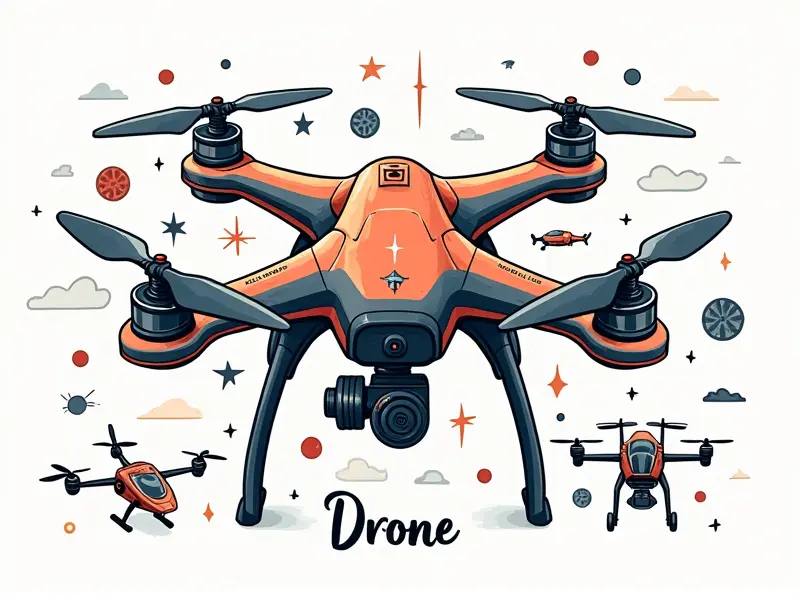FPV setup for beginners?

Beginner's Guide to FPV Setup
Welcome to the world of First-Person View (FPV) drone flying! Setting up your first FPV system can seem daunting at first, but with this comprehensive guide, you'll be ready to take flight in no time. This article covers everything from selecting the right gear to assembling and testing your setup.
Easy FPV Setup for Newbies
FPV flying is an exhilarating experience that offers a unique perspective on aerial photography and racing. For beginners, it's crucial to start with a simple and affordable kit that provides all the necessary components without overwhelming you.
Selecting Your Gear
- Videocamera: Choose a high-quality camera with good resolution and low latency for clear video transmission. Popular options include the FatShark Freestyle 2K and the ImmersionRC V2.
- Radio Transmitter: A reliable transmitter is essential for controlling your drone smoothly. The TBS Crossfire X or DJI Lightbridge 2 are excellent choices.
- Videomonitor: Opt for a high-resolution monitor with adjustable brightness and contrast settings, such as the FatShark Dominator HD3 or the ImmersionRC V2.
DIY FPV Setup for Beginners
If you're handy with tools and enjoy building things yourself, consider creating your own FPV setup. This approach can be cost-effective and allows you to customize your equipment according to your specific needs.
- Antennas: Use high-quality antennas for both the transmitter and receiver to ensure strong signal strength and minimal interference.
- Battery Pack: A robust battery pack is essential for powering all components of your FPV system. Look for models with multiple output ports and a long lifespan.
Basics of Setting Up FPV
Before diving into the technical details, it's important to understand the fundamental steps involved in setting up an FPV system:
Step 1: Assembling Your Components
- Mounting Camera: Securely attach your camera to the drone frame using mounting brackets or tape.
- Connecting Transmitter: Connect the transmitter to the camera and power source, ensuring all connections are secure.
Step 2: Testing Your Setup
Once your components are assembled, test each part individually before combining them. This helps identify any issues early on and ensures a smooth overall setup process.
- Camera Test: Ensure the camera is functioning properly by checking video output through the monitor.
- Transmitter Check: Verify that the transmitter sends signals without lag or interference.
Simple FPV Setup Tutorial
This section provides a step-by-step tutorial to guide you through the process of setting up your first FPV system. Follow these instructions carefully to avoid any complications during assembly and testing.
Step 1: Gather Your Equipment
- Videocamera:
- Radio Transmitter:
- Videomonitor:
- Battery Pack:
- Antennas:
Step 2: Assemble Components
- Mount the camera onto your drone frame using appropriate mounting brackets or tape.
- Connect the transmitter to the camera and power source, ensuring all connections are secure.
- Attach antennas to both the transmitter and receiver for optimal signal strength.
Step 3: Test Your Setup
- Camera Test:
- Transmitter Check:
FPV Gear for First-Time Flyers
Selecting the right gear is crucial for a successful FPV experience. Here are some recommended components and accessories to get you started:
- Videocamera: FatShark Freestyle 2K, ImmersionRC V2
- Radio Transmitter: TBS Crossfire X, DJI Lightbridge 2
- Videomonitor: FatShark Dominator HD3, ImmersionRC V2
- Battery Pack: High-capacity batteries with multiple output ports
Step-by-Step FPV Beginner Setup
This section provides a detailed guide to setting up your FPV system step by step. Follow these instructions carefully to ensure a smooth and successful assembly process.
Step 1: Assemble Components
- Mount Camera:
- Connect Transmitter:
- Attach Antennas:
Step 2: Test Setup
- Camera Test:
- Transmitter Check:
Getting Started with FPV Gear
Once you have your gear assembled and tested, it's time to take flight! Here are some tips for getting started with your new FPV system:
- Familiarize Yourself With Controls: Spend time understanding how each control works before taking off.
- Practice in Safe Areas: Start flying in open, unpopulated areas to build confidence and improve skills gradually.
Essential FPV Setup Guide
This guide covers the essential aspects of setting up an FPV system for beginners. From selecting gear to testing components, we've got you covered every step of the way.
Selecting Gear
- Videocamera:
- Radio Transmitter:
- Videomonitor:
Assembling Components
- Mount Camera:
- Connect Transmitter:
- Attach Antennas:
Testing Setup
- Camera Test:
- Transmitter Check:
FPV Beginner Tips and Tricks
Here are some additional tips to help you get the most out of your FPV experience:
- Practice Regularly: Consistent practice is key to improving skills and confidence.
- Join Local Clubs or Communities: Connect with other FPV enthusiasts for support, advice, and camaraderie.
Conclusion
Setting up your first FPV system can be an exciting adventure. By following this guide carefully, you'll be well on your way to enjoying the thrill of FPV flying. Remember to take it one step at a time, and don't hesitate to seek advice from experienced flyers along the way.

